Mountain Review: Loon
MOUNTAIN SCORE
CATEGORY BREAKDOWN
See our criteria5
Snow:
7
Resiliency:
3
Size:
4
Terrain Diversity:
4
Challenge:
7
Lifts:
4
Crowd Flow:
6
Facilities:
7
Navigation:
3
Mountain Aesthetic:
GOOD TO KNOW
1-Day Ticket: $79-$149
Pass Affiliation: Ikon Pass
On-site Lodging: Yes
Aprés-ski: Moderate
Nearest Cities: Boston (2 hrs), Montreal (3 hrs)
Recommended Ability Level:
+ Pros
Strong snowmaking
Modern lifts
Wide variety of intermediate terrain
Close proximity to Boston
– Cons
Packed on weekends
Cramped gondola cabins
Limited advanced and expert terrain
No trail connection between North and South Peak sides
MOUNTAIN STATS
Lifts: 13
Trails: 73
Beginner: 19%
Intermediate: 53%
Advanced/Expert: 28%
RECENT ARTICLES
Mountain Review
Looking for decent skiing close to Boston? New Hampshire’s Loon Mountain has long been a go-to choice. The resort stands out for its lift infrastructure, decently varied terrain, and lively nearby town—and has seen a significant suite of investments over the past three years. However, Loon has quite a few drawbacks as well, and not every regional skier or rider will find it the best choice.
Snow Quality and Resiliency
Loon sees commendable snowfall totals for New Hampshire, although they’re not quite as high as some northern Vermont and Maine competitors. There’s often enough cover to fill in ungroomed terrain naturally, but thin cover, with obstacles such as rocks and dirt, make regular appearances throughout the season. Loon offers one of the more reliable operating schedules thanks to near-universal snowmaking coverage, although some of its terrain does still fall victim to variable opening schedules.
Loon’s 403-acre skiable footprint makes it the second-largest ski resort in New Hampshire.
Size and Terrain Layout
With 403 acres of skiable terrain—30 of which are new for the 2023-24 season—Loon is one of the biggest ski resorts in New Hampshire, although it still falls quite short of the biggest New England ski resorts size-wise. The resort mainly offers typical below-treeline trails, although a few unique glade areas exist throughout as well.
Loon comprises two distinct mountain areas: the North Peak side, which hosts the majority of the resort’s terrain and a decently competitive vertical drop, and the South Peak side, which is smaller but typically less crowded. The two resort sides are connected by a quad lift, but despite their reasonably close proximity, there is no physical trail connection between them.
Loon’s North Peak green runs tend to get quite congested, but the new Timbertown expansion has significantly improved the resort’s beginner experience.
Beginner Terrain
Loon still isn’t the best ski resort for beginners, but the experience has significantly improved compared to previous winters. Up until 2023, the only publicly accessible green trails existed on the North Peak side, which offers some easy terrain options but a less-than-ideal beginner setup. North Peak’s beginner options open up a bit in the lower half of the resort, but the upper half is only home to a singular green-rated trail route, resulting in significant congestion and making for stressful on-mountain conditions for skiers and snowboarders of lower abilities.
However, the new Timbertown terrain expansion on South Peak substantially overhauls Loon’s beginner experience. This trail pod brings true beginner terrain to the South Peak side of the resort for the first time ever (there have technically been a few green-rated real estate trails for years, but they aren’t designed for the public and mostly require taking a blue run first). Unlike the North Peak side’s rather limited green runs, the Timbertown pod offers several beginner trails to choose from, allowing guests of this ability level to spread out across the slopes and making for a much more welcoming trail environment. This all being said, there is no contiguous beginner route between Loon’s North and South Peak terrain pods, so guests will need to reach intermediate or better proficiency to ski or ride between the two mountain sides.
TRAIL MAP
Intermediate Terrain
Loon’s terrain offerings open up quite a bit for skiers and riders of intermediate proficiency. The resort hosts ample moderately-sloped cruising trails, with several blue groomers to choose from across every mountain area. The resort also offers a handful of unique intermediate woods areas. However, these blue runs are not created equal. While the intermediate trails on South Peak and the upper half of North Peak offer character and feel reasonably unique, the same can’t be said for the dozens of groomers on the lower half of North Peak, which comprise straight, monotonous profiles and get repetitive quickly.
Loon is better for intermediates than any other demographic, with over half of its terrain designated for this ability level.
Advanced and Expert Terrain
While Loon does offer some reasonably difficult advanced and expert terrain, it’s not the hardest ski resort out there, and other New England ski resorts offer much more strenuous challenges. Several black-diamond runs receive regular grooming, and some of them might be rated as blues at other East Coast resorts. Even Loon’s lone double-black trail—Ripsaw—is perennially groomed, although it is steep enough to allow guests to build up serious speed and bomb down.
While technically rated as single-black diamonds, we’d argue Loon’s toughest challenges exist in its mogul and tree runs. Chiefly located on the upper half of North Peak, Loon’s ungroomed black trails are fairly long and make for properly taxing endurance terrain. Loon’s woods offer its most unique challenges, with plenty of natural obstacles scattered throughout. The resort marks many glade areas on its trail map, but a few unofficial skiable woods areas exist across the resort as well.
Most of Loon’s advanced and expert trails see regular grooming, although a few exceptions exist.
Terrain Parks
Loon offers a competitive terrain park setup for New Hampshire, with features for various freestyle abilities designed with progression in mind. In addition to the typical boxes, rails, and jumps, the resort features a Lil’ Stash park with small features derived from wood as well as an 18-foot superpipe when conditions allow. Loon has five official terrain parks, but it also hosts a handful of “Top Secret” parks each winter; these small-to-medium freestyle areas tend to pop up on random trails, but you can see their locations if you check Loon’s website, so they’re really secret in name only.
RECOMMENDED SKIS FOR LOON
NOTE: We may receive a small affiliate commission if you click on the below links. All products listed below are unisex.
Recommended all-mountain ski
Recommended carving ski
Recommended glade ski
Recommended expert/touring ski
Lifts
With a gondola, bubble eight-pack, and several high-speed quads, Loon boasts one of the flashiest lift setups in New England. The gondola and bubble chair do a great job of protecting guests from the elements on cold, windy days, and the predominantly high-speed lift network transports guests up the slopes quickly.
However, a few notable lifts at Loon are still slow, fixed-grip chairs. Most of these either serve in a helper capacity or aren’t too long, but the Tote Road Quad, which provides the only connection between the North and South Peak sides, feels pretty sluggish along its essentially flat lift line. In addition, installing the new Timbertown Quad as a fixed-grip lift rather than a high-speed feels like another missed opportunity; this chair may be modest in length, but in trying to spread beginners away from the detachable-lift-served North Peak, the resort likely would have found more success by installing a lift with a more appealing ride speed.
Steam-Powered Locomotive
While not technically a lift, it is worth mentioning that Loon features a steam-powered locomotive that runs between the two North Peak base areas. This train doesn’t serve any terrain, but riding it provides a one-of-a-kind experience that skiers and riders will not find at other mountains. The locomotive operates on Fridays, Saturdays, and Sundays during the core winter season.
Loon boasts several flashy lifts, including the Kancamagus 8 bubble eight-pack chairlift.
Crowds
Loon’s uphill setup doesn’t do it many favors when it comes to crowds. As one of the closest ski resorts to Boston—and the closest one on the Ikon Pass—the mountain gets packed on weekends, especially on the North Peak side.
Thanks to its enclosed nature and base-to-near-summit service, Loon’s gondola already sees heavy demand—but unlike gondolas at essentially every other ski resort in North America, which can fit six to ten people, Loon’s cabins can only fit four guests each, substantially compounding the issue. This lift even sees lines on off-peak weekdays, an notorious rarity for the Northeast. While warm, these comically tiny cabins feel cramped, so make sure to buddy up with your neighbor. The neighboring Seven Brothers Express quad, which serves the lower half of the gondola’s terrain in a helper capacity, tends to see substantially fewer crowds (likely due to the lack of shelter from the cold) and can be a godsend on busy days.
Elsewhere on Loon’s North Peak, guests should expect significant lift lines during peak times, albeit ones that aren’t as bad as those for the gondola. The Kancamagus 8 bubble chair theoretically offers the highest uphill capacity of any lift at Loon, but even after running it for a few seasons, the resort still hasn’t effectively figured out how to load eight people on a lift at a time; as a result, the chair often runs below its intended capacity. Crowds on the isolated and smaller South Peak side tend to remain much more reasonable.
Loon gets packed on weekends and holidays, with the four-passenger gondola often seeing the worst lines.
Facilities
While nowhere near as susceptible to wind as some nearby competitors, Loon does get quite cold and windy at times, making for uncomfortable conditions. Fortunately, in addition to its two enclosed lifts, the resort offers relief with a variety of on-mountain lodges, especially on the North Peak side. The two North Peak base areas boast sizable lodges with full dining facilities, as well as two mid-mountain lodges, which provide convenient quarters but lack sufficient seating during peak times.
On the flip side, the facilities setup on Loon’s South Peak side could use some work. Guests on this side of the resort will find just a singular base lodge—and while this complex does serve food and drink, its temporary tent structure does not provide the same comfort or isolation as a more permanent building would.
Loon is ultimately straightforward to get around, but its signs could use more contrast to better distinguish directions and trail difficulties.
Ease of Navigation
Thanks to its modest size, Loon is pretty easy to get around for the most part. However, there are a few minor issues. On-mountain signage could use some work—on the North Peak side, it’s not always clear what base lodge or lift you’ll end up at, and the physical signs themselves could use a bit more contrast to help distinguish different trails and difficulty levels. In addition, it’s a bit of an annoyance to have to take a lift to get between the North and South Peak sides. But otherwise, guests should figure out their way around the resort within a day or so.
RECOMMENDED SNOWBOARDS FOR LOON
NOTE: We may receive a small affiliate commission if you click on the below links. All products listed below are unisex.
Recommended intermediate board
Recommended advanced board
Recommended expert board
Recommended touring board
Mountain Aesthetic
When it comes to its physical topography, Loon doesn’t especially stand out versus its competitors. But the resort is surrounded by gorgeous scenery, including stunning views of the nearby Mount Lafayette and Mount Liberty from various North Peak trails, as well as vistas of the iconic Mount Washington from upper mountain areas. However, visitors will rarely feel isolated, as the resort’s popularity and moderate size contribute to high trail density and an aura of commercialization.
Ikon Pass Access
It’s worth noting that Loon is a member of the Ikon Pass. The resort comes with seven unrestricted days with no blackouts on the full Ikon Pass, as well as five days with blackouts on the Ikon Base and Base Plus Passes. Loon requires reservations for passholders to access the resort, but very few days have historically filled up to capacity.
Loon offers beautiful views of surrounding peaks from upper mountain areas, with coin-operated binoculars available at its Summit Café.
Getting There and Parking
Perhaps the most appealing feature of Loon is its proximity to Boston. With no traffic, the resort is just two hours from New England’s largest city. While no official public transportation runs between Loon and Boston, there are some private bus companies that run day trips to Loon from both downtown and the Boston suburbs.
It is worth noting that convenient parking can be a serious problem on Loon’s North Peak side, especially during peak times. Lots on this side fill up quickly, meaning you’ll have to get there early on a weekend or holiday if you want to secure a spot. Fortunately, the South Peak side’s Escape Route parking lot tends to offer a lot more available parking, and with the new Timbertown lift this season, those who park in this lot finally have direct access to the mountain without taking a shuttle (although beginner-level guests who want to access North Peak will still need to take a shuttle to get to that side of the mountain).
Loon boasts multiple condo and hotel accommodations directly on site.
Lodging
Loon offers several lodging options both directly on site and in close proximity to the mountain. In addition to the high-end slopeside Mountain Club at Loon hotel, the resort features several ski-in/ski-out condos on both the North Peak and South Peak sides, as well as a few options on North Peak that are just a short walk away from the slopes. Various options for a range of budgets are also available in the nearby town of Lincoln; most of these accommodations sit less than 10 minutes from the resort.
Aprés-ski
While Loon is more of a family-oriented resort than a party mountain, those looking for post-slopes activities will find plenty to do. The adjacent town of Lincoln hosts an extensive variety of bars, restaurants, and breweries—some of which even offer tours and tastings! If you can’t wait to leave the mountain for aprés, both North Peak base lodges offer full bars with plenty of seating and enjoyable vibes.
The town of Lincoln, directly adjacent to Loon, offers a range of post-slopes activities.
Verdict
Loon offers a competitive lift fleet and excellent snowmaking, but for those who don’t benefit from the convenient Boston access, there isn’t much of a reason to visit. The resort isn’t bad, but other mountains offer more unique terrain, larger footprints, and substantially better crowd conditions.
Pricing
Core-season lift ticket rates aren’t terrible for off-peak weekdays, but with rates topping $140 for peak weekends and holidays, the cost of entry becomes steep for the most popular times.







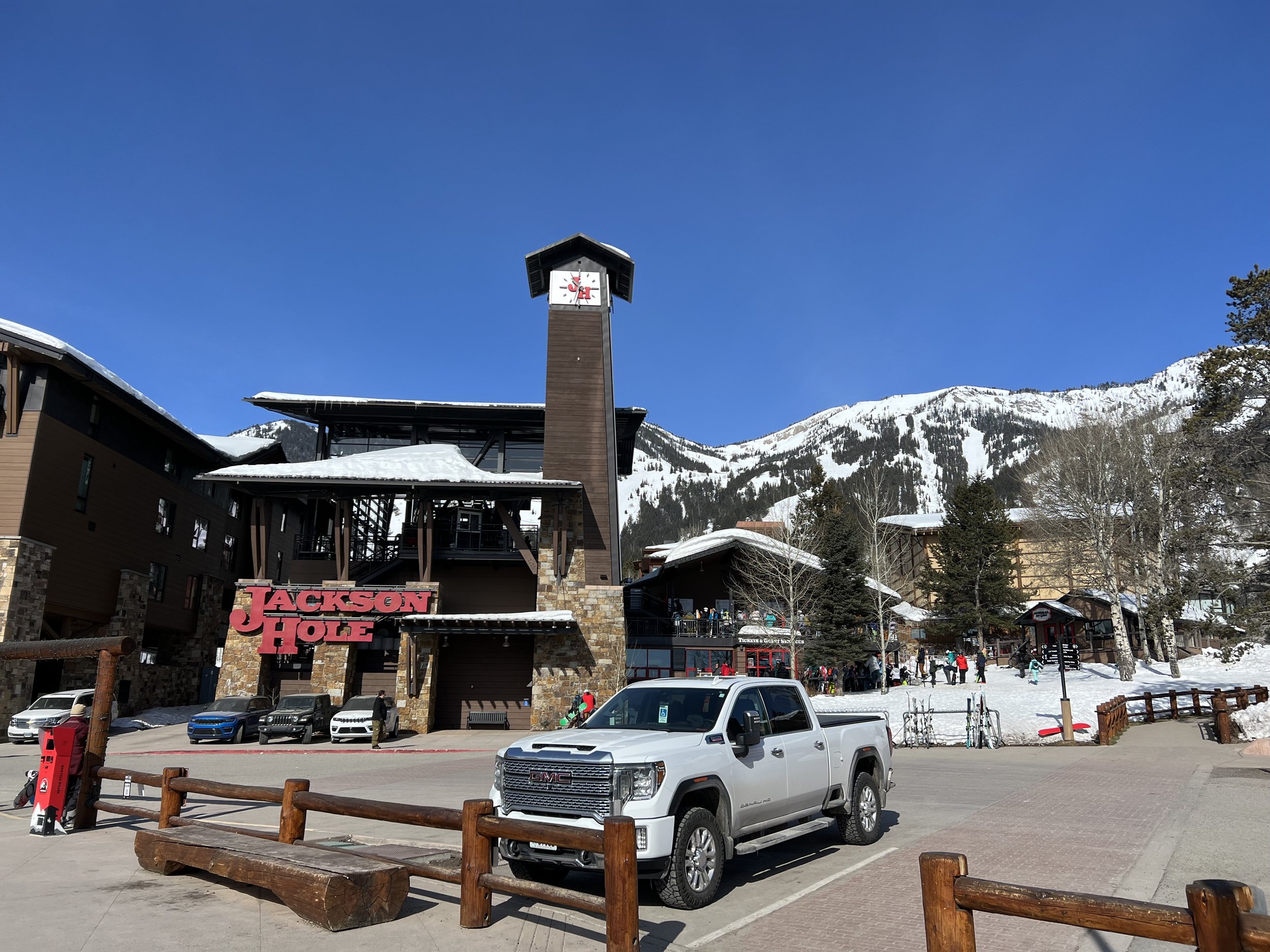
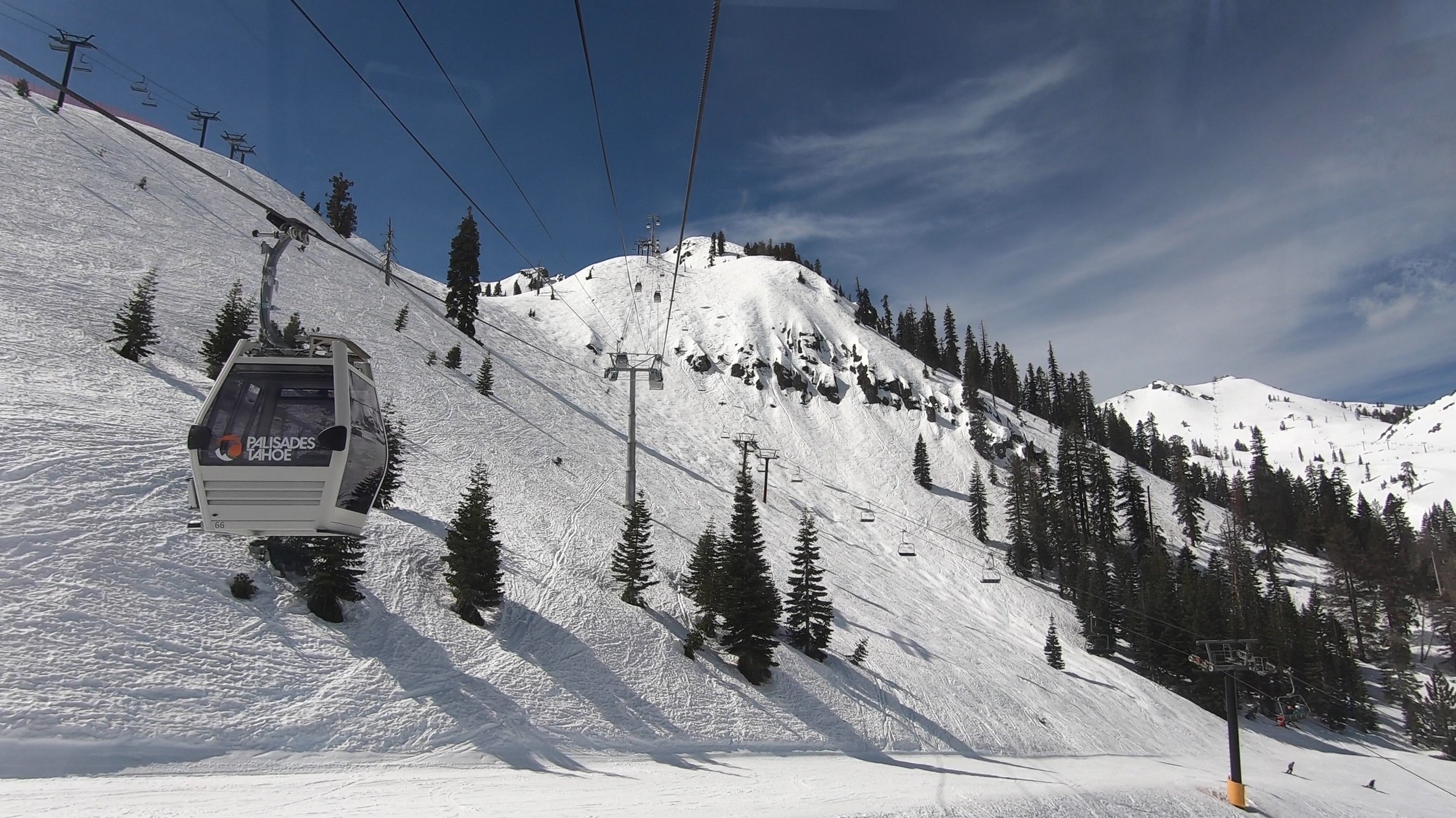
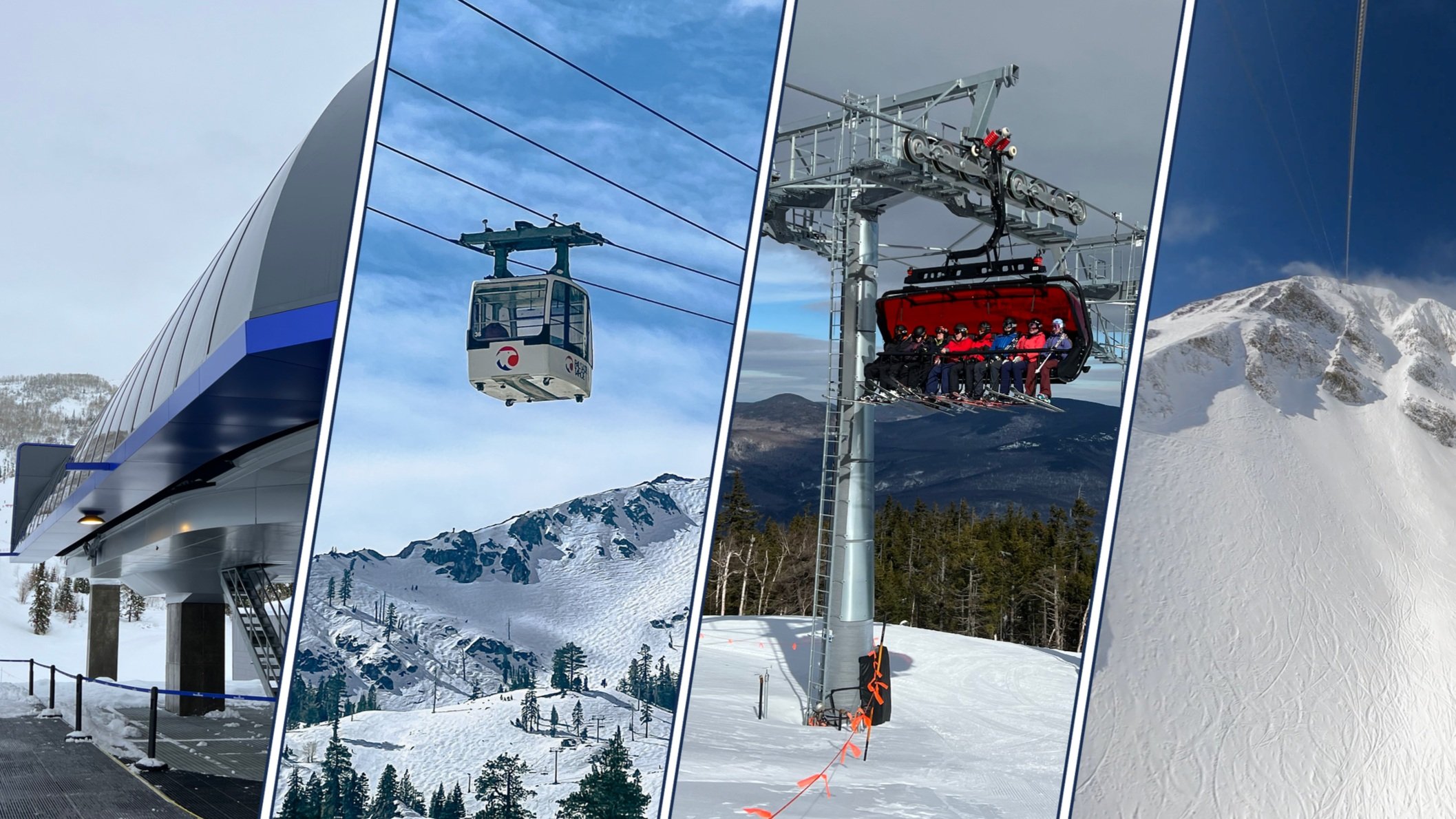
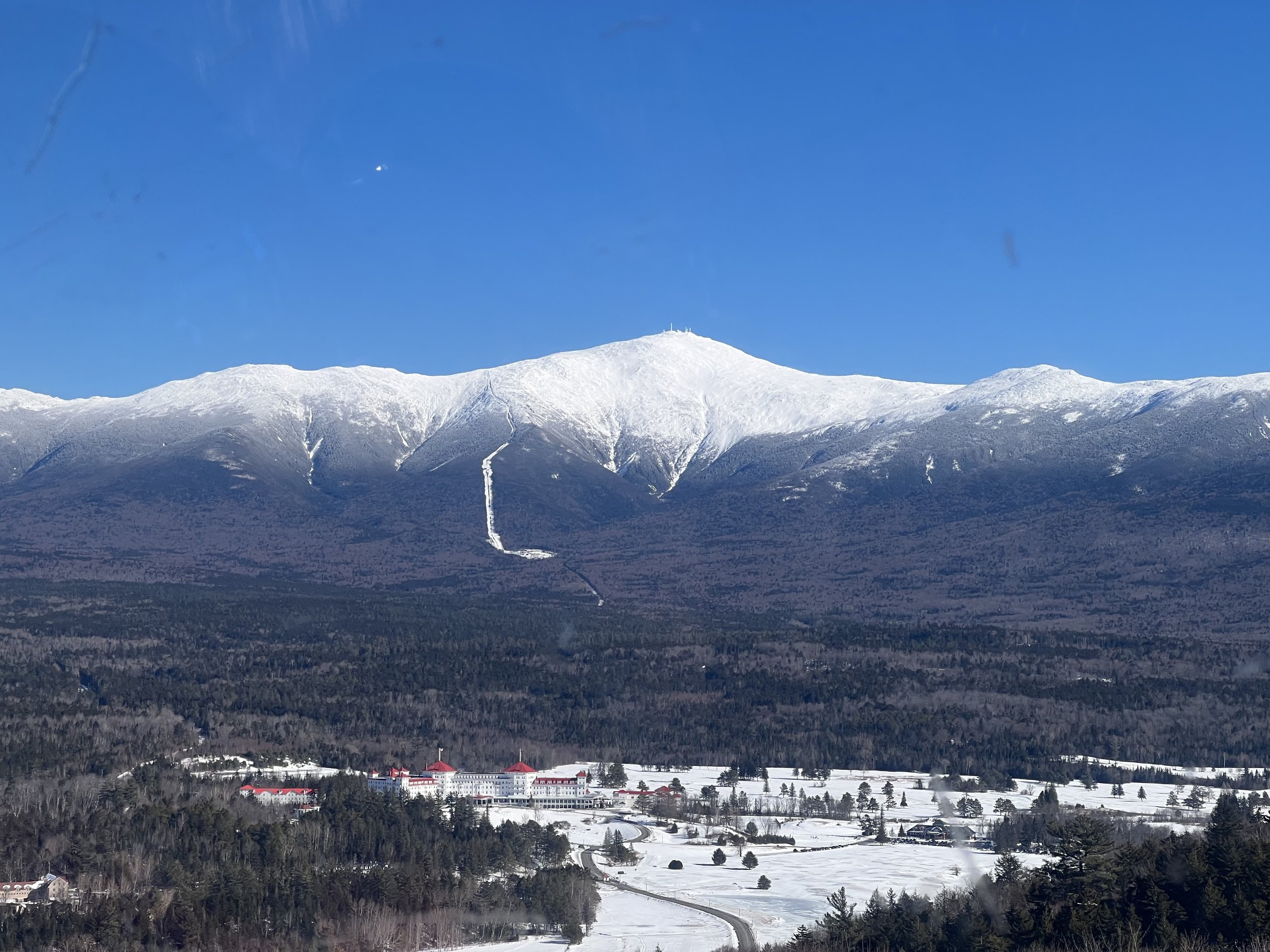
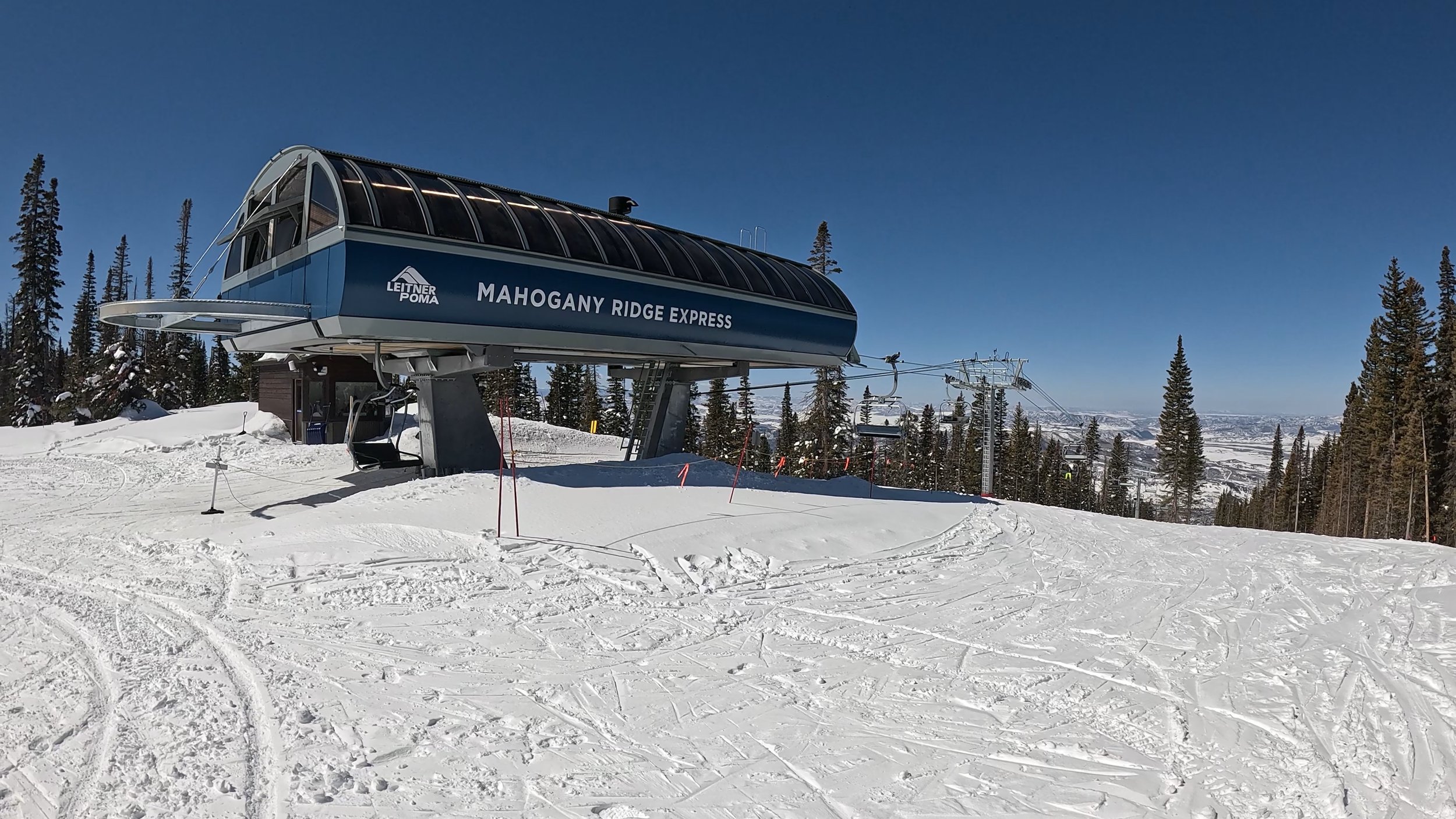
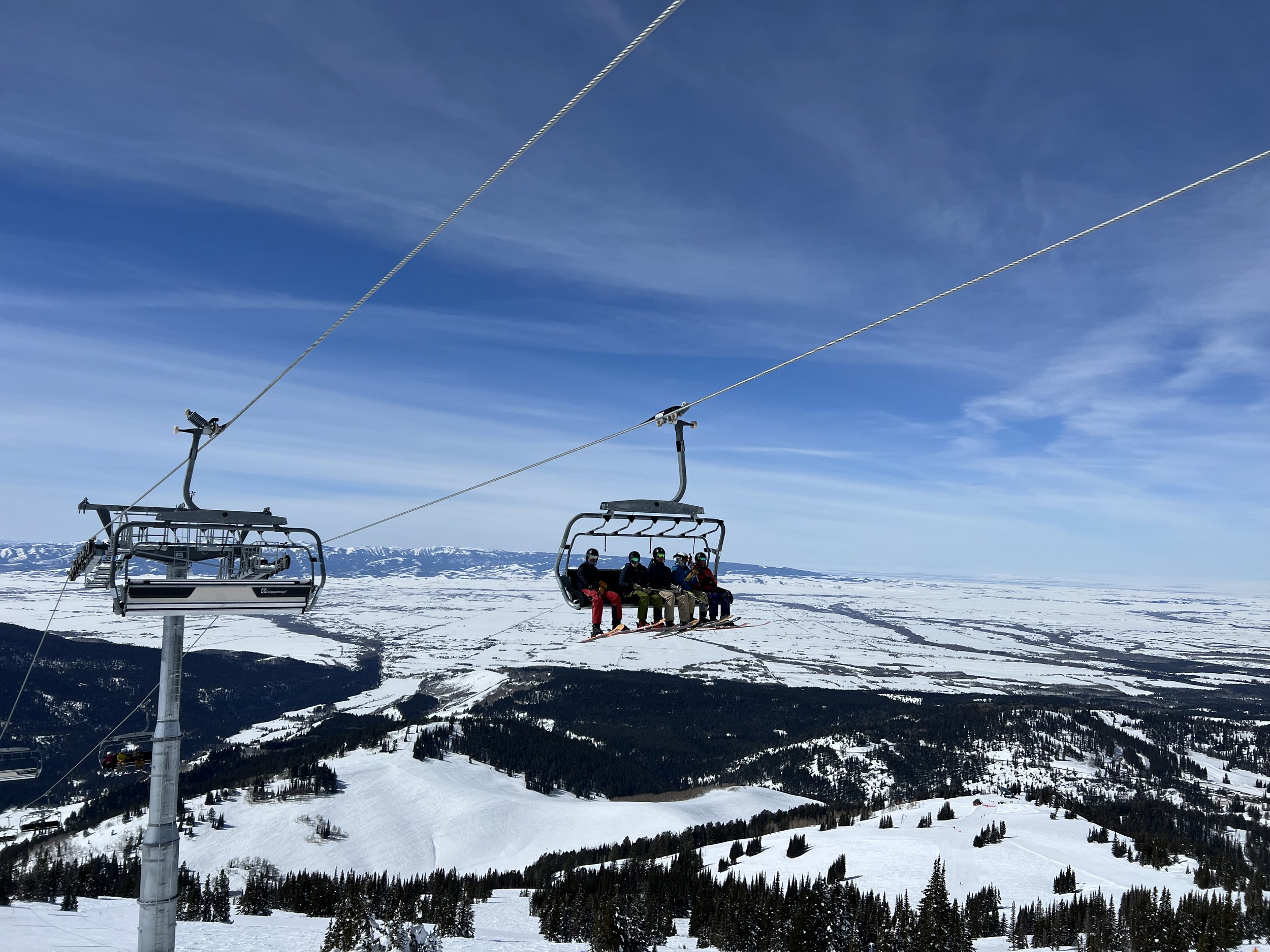
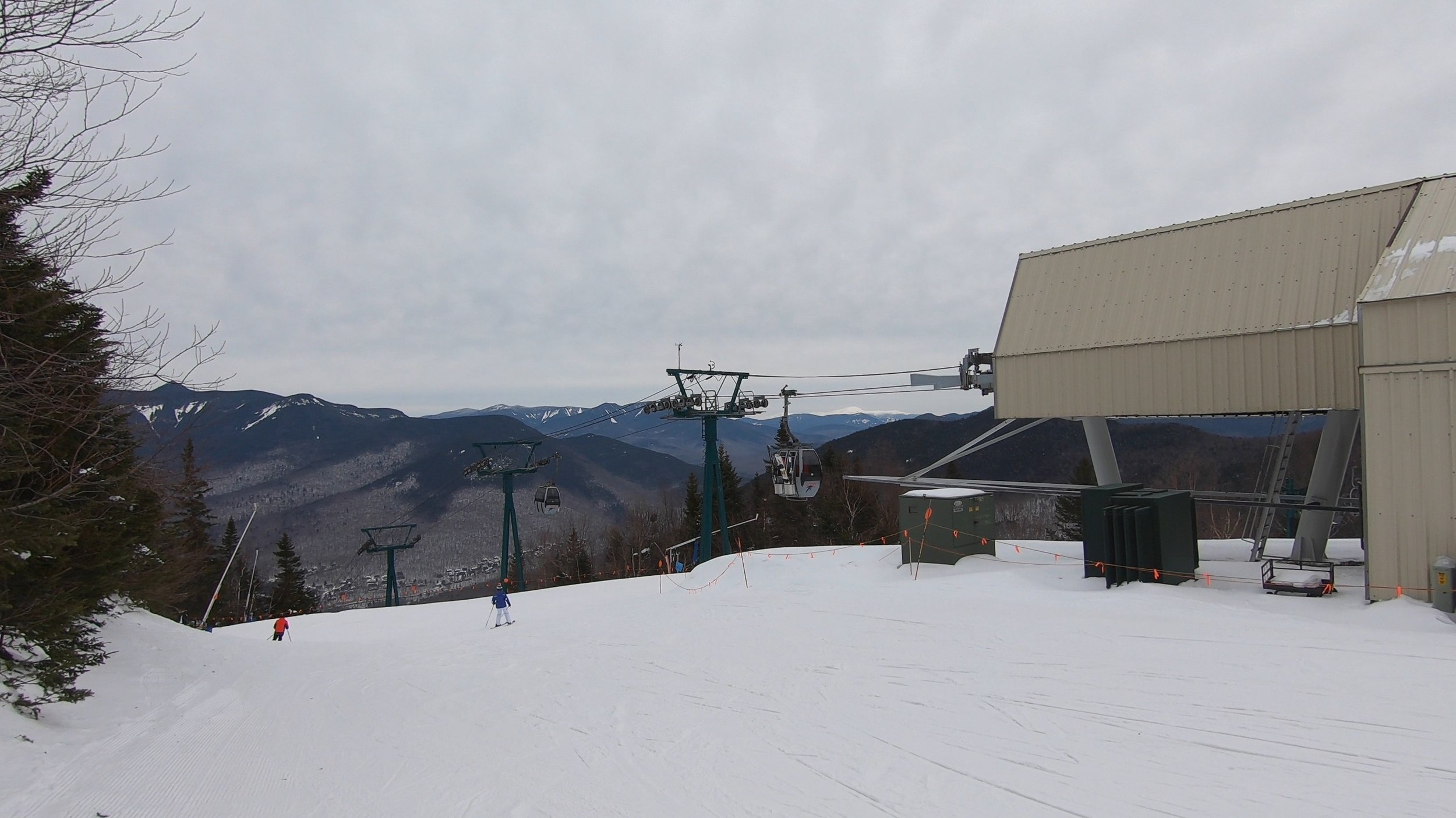
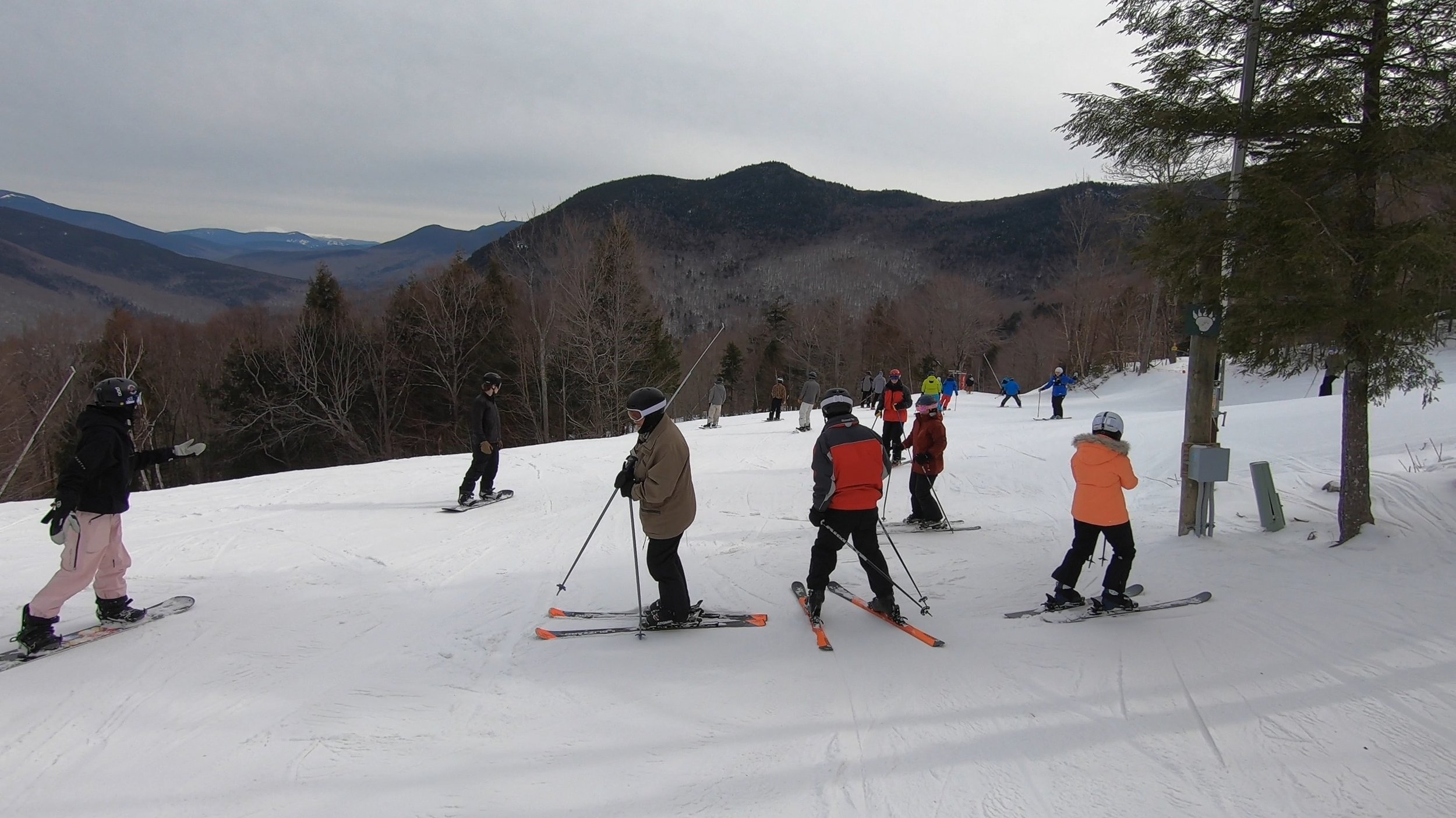
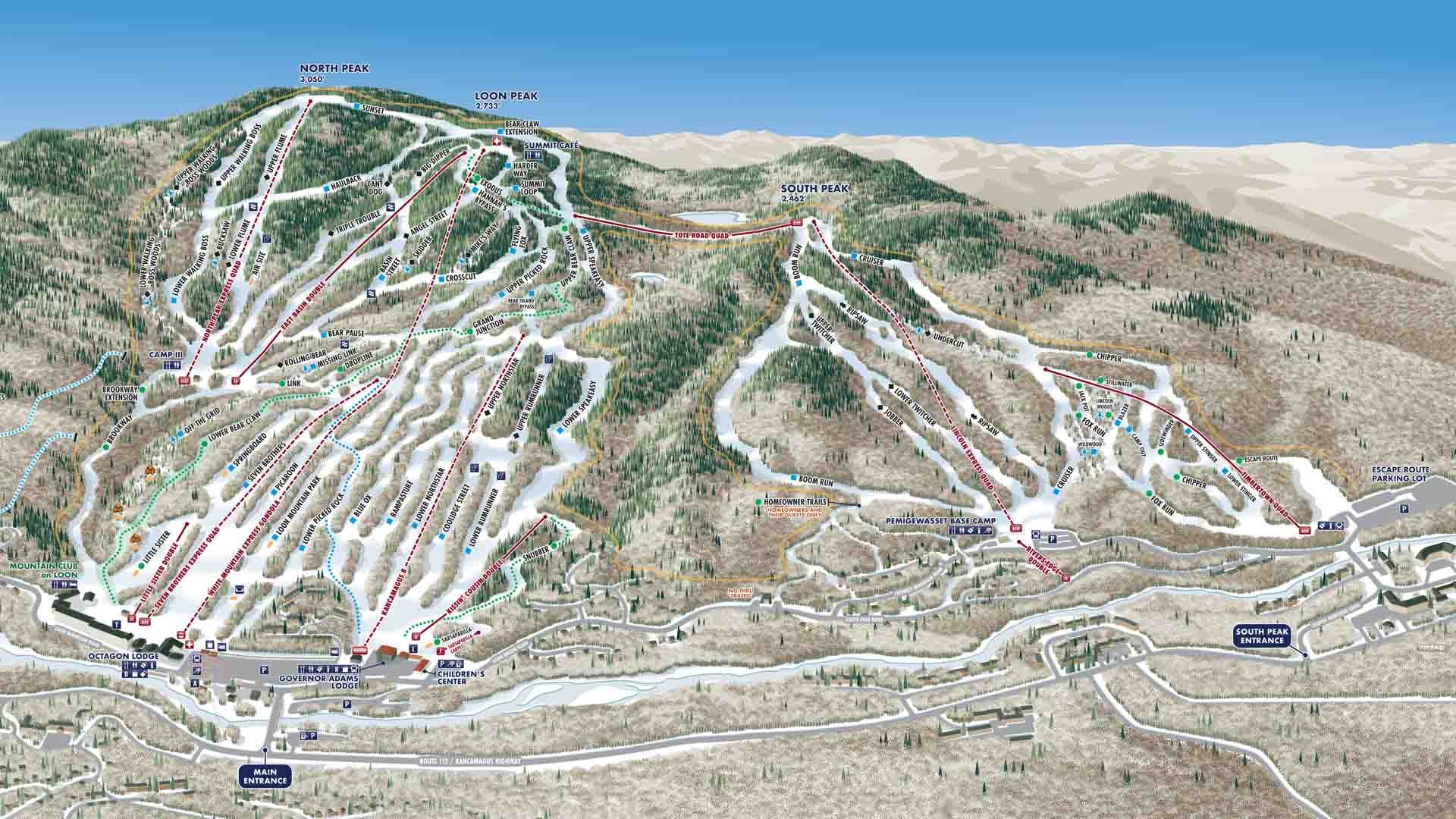
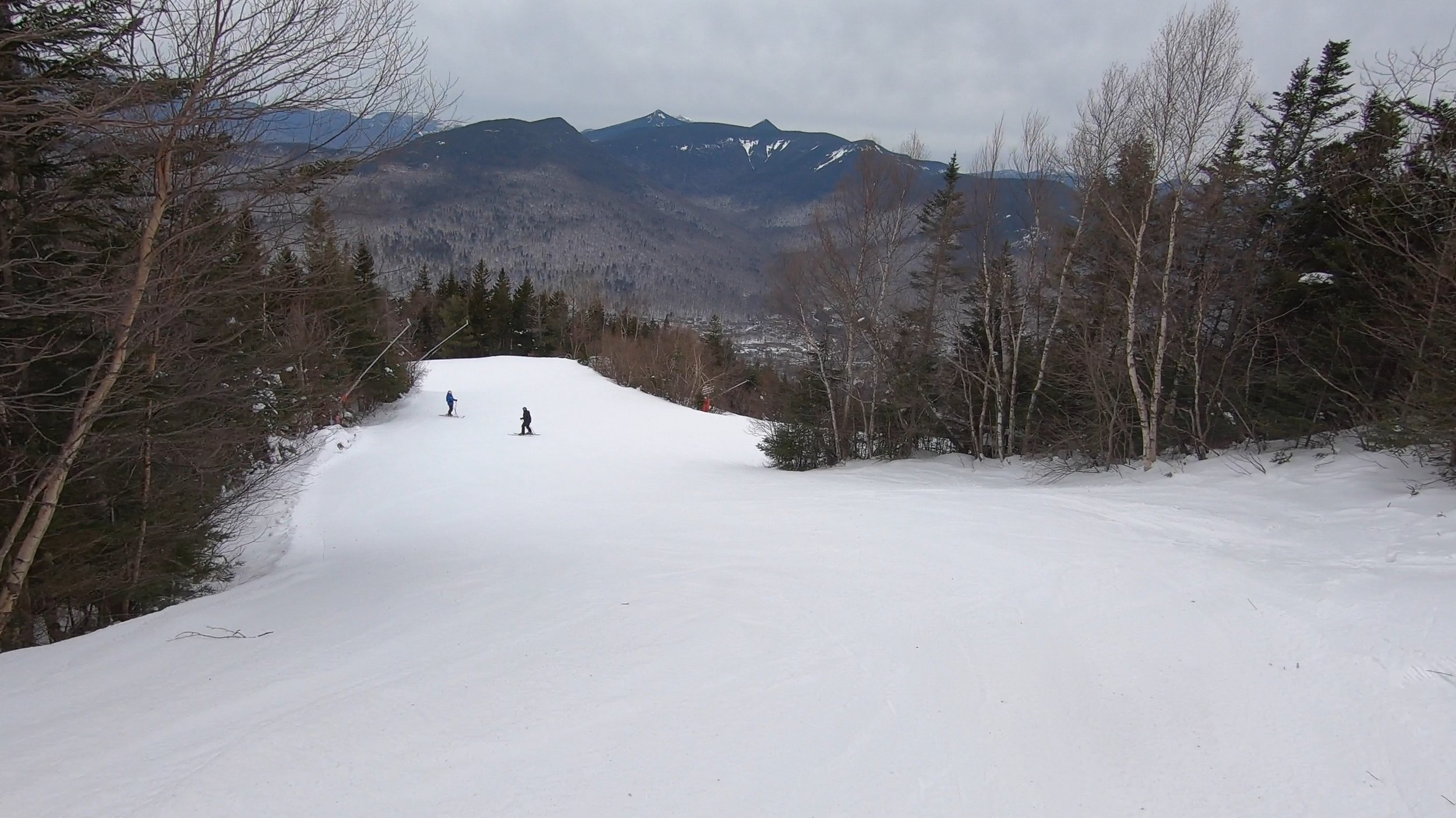
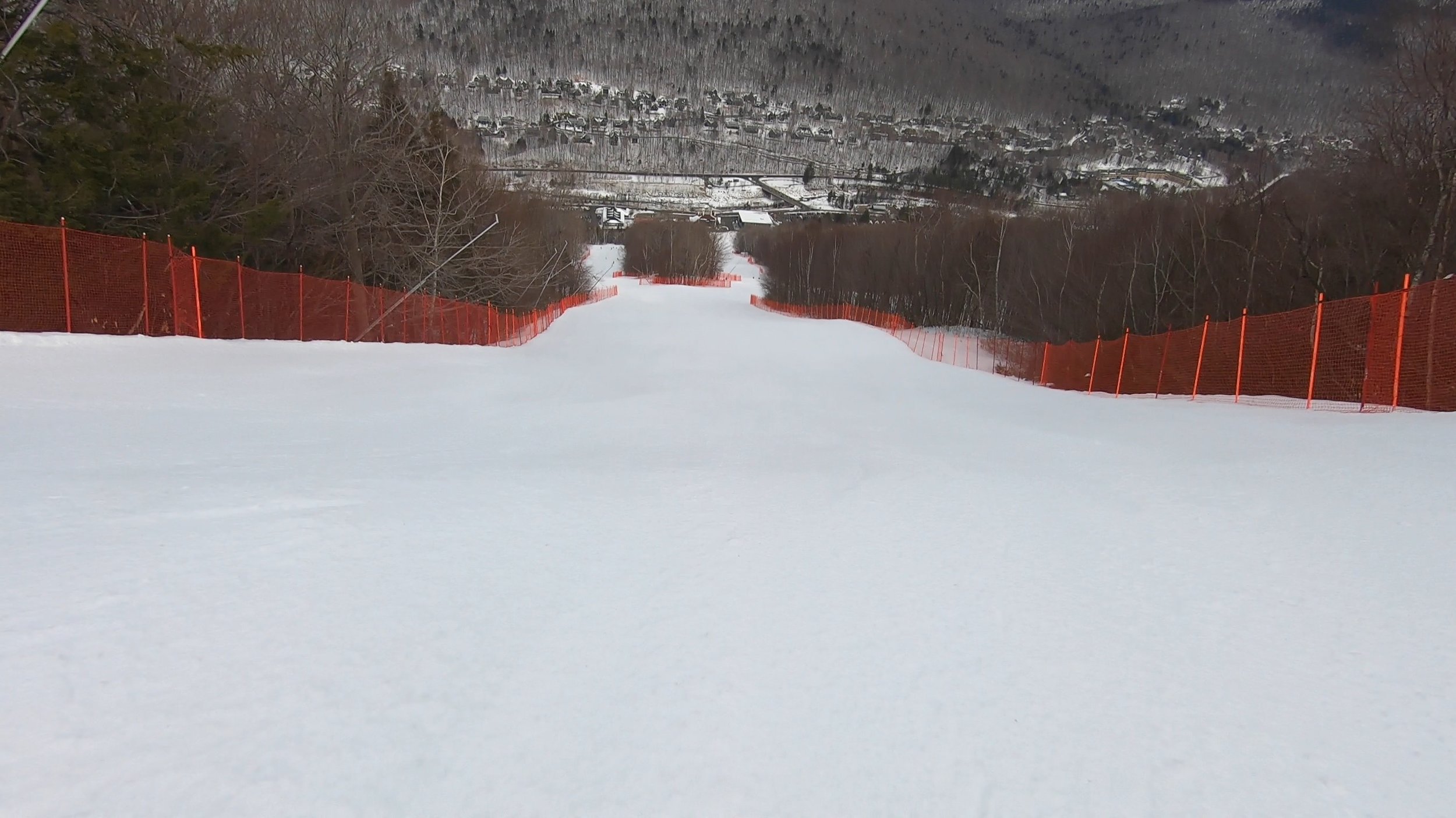














If you plan on visiting certain resorts on the Ikon Pass, now is your last time to secure access at a remotely reasonable rate.